Laszlo Nadai
Adaptive Neuro-Fuzzy Inference System and a Multilayer Perceptron Model Trained with Grey Wolf Optimizer for Predicting Solar Diffuse Fraction
Sep 13, 2020
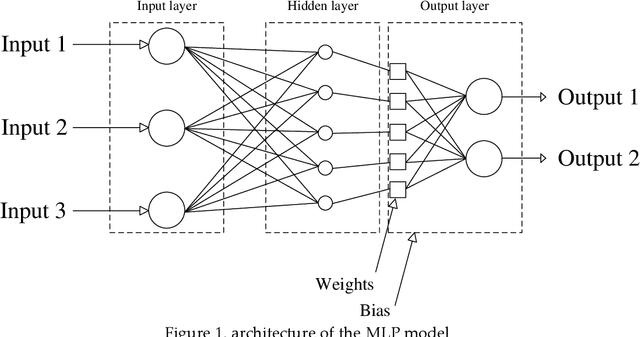
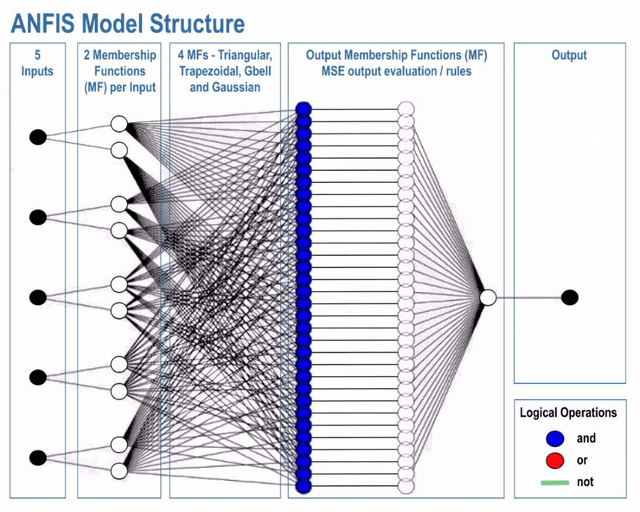

Abstract:The accurate prediction of the solar Diffuse Fraction (DF), sometimes called the Diffuse Ratio, is an important topic for solar energy research. In the present study, the current state of Diffuse Irradiance research is discussed and then three robust, Machine Learning (ML) models, are examined using a large dataset (almost 8 years) of hourly readings from Almeria, Spain. The ML models used herein, are a hybrid Adaptive Network-based Fuzzy Inference System (ANFIS), a single Multi-Layer Perceptron (MLP) and a hybrid Multi-Layer Perceptron-Grey Wolf Optimizer (MLP-GWO). These models were evaluated for their predictive precision, using various Solar and Diffuse Fraction (DF) irradiance data, from Spain. The results were then evaluated using two frequently used evaluation criteria, the Mean Absolute Error (MAE) and the Root Mean Square Error (RMSE). The results showed that the MLP-GWO model, followed by the ANFIS model, provided a higher performance, in both the training and the testing procedures.
Performance Analysis of Combine Harvester using Hybrid Model of Artificial Neural Networks Particle Swarm Optimization
Feb 22, 2020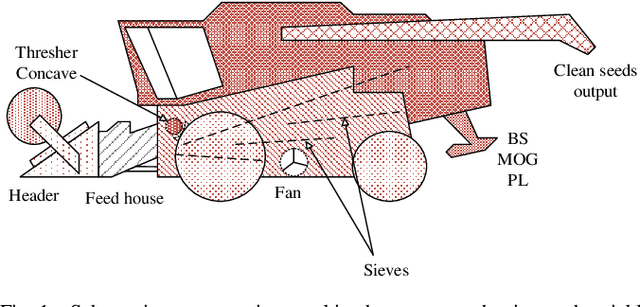

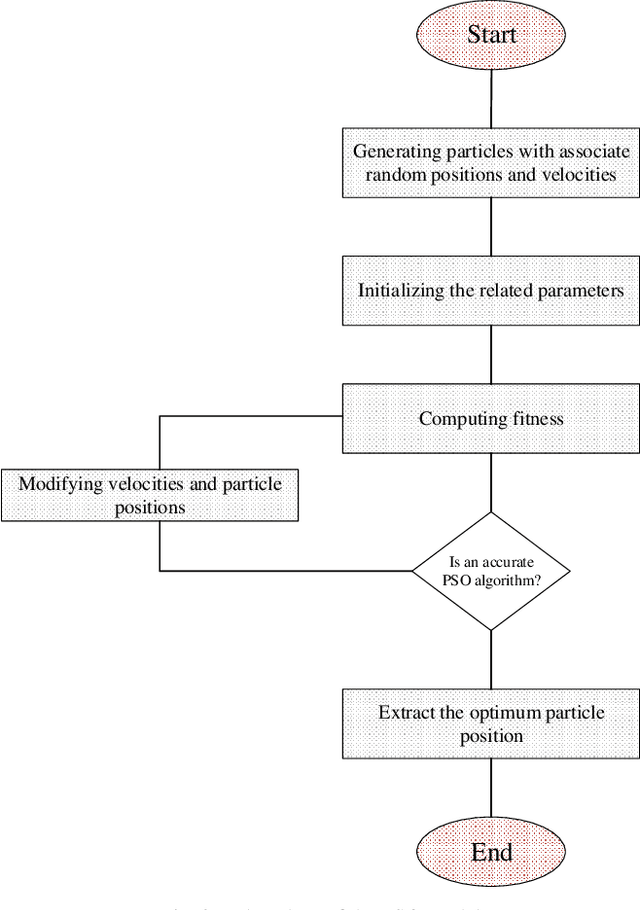
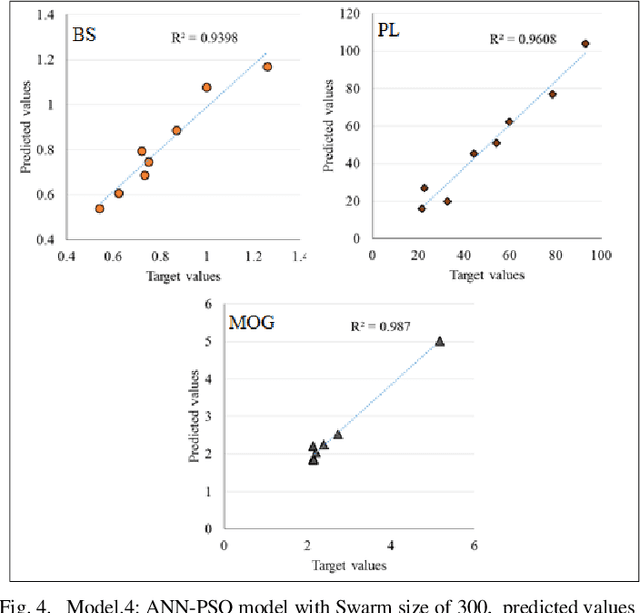
Abstract:Novel applications of artificial intelligence for tuning the parameters of industrial machines for optimal performance are emerging at a fast pace. Tuning the combine harvesters and improving the machine performance can dramatically minimize the wastes during harvesting, and it is also beneficial to machine maintenance. Literature includes several soft computing, machine learning and optimization methods that had been used to model the function of harvesters of various crops. Due to the complexity of the problem, machine learning methods had been recently proposed to predict the optimal performance with promising results. In this paper, through proposing a novel hybrid machine learning model based on artificial neural networks integrated with particle swarm optimization (ANN-PSO), the performance analysis of a common combine harvester is presented. The hybridization of machine learning methods with soft computing techniques has recently shown promising results to improve the performance of the combine harvesters. This research aims at improving the results further by providing more stable models with higher accuracy.
Comparative Analysis of Single and Hybrid Neuro-Fuzzy-Based Models for an Industrial Heating Ventilation and Air Conditioning Control System
Feb 22, 2020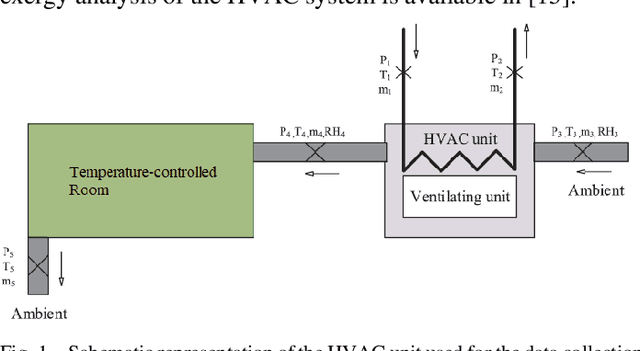
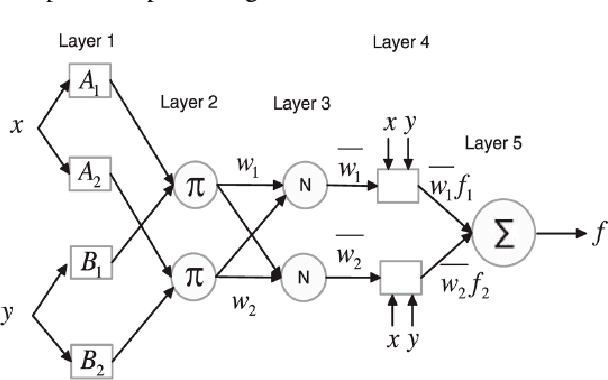
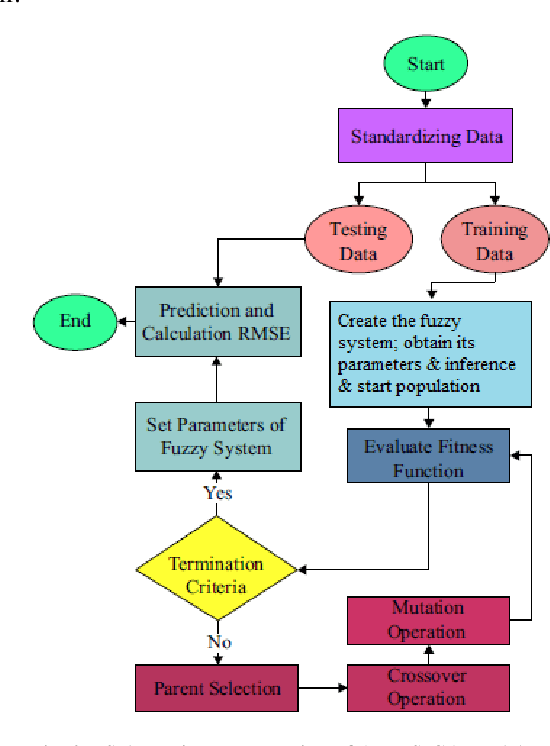
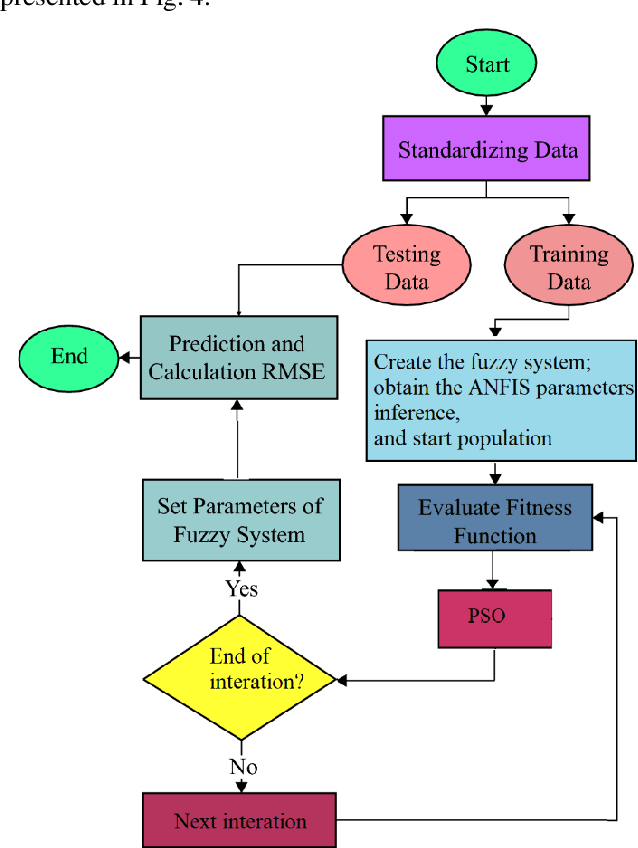
Abstract:Hybridization of machine learning methods with soft computing techniques is an essential approach to improve the performance of the prediction models. Hybrid machine learning models, particularly, have gained popularity in the advancement of the high-performance control systems. Higher accuracy and better performance for prediction models of exergy destruction and energy consumption used in the control circuit of heating, ventilation, and air conditioning (HVAC) systems can be highly economical in the industrial scale to save energy. This research proposes two hybrid models of adaptive neuro-fuzzy inference system-particle swarm optimization (ANFIS-PSO), and adaptive neuro-fuzzy inference system-genetic algorithm (ANFIS-GA) for HVAC. The results are further compared with the single ANFIS model. The ANFIS-PSO model with the RMSE of 0.0065, MAE of 0.0028, and R2 equal to 0.9999, with a minimum deviation of 0.0691 (KJ/s), outperforms the ANFIS-GA and single ANFIS models.
Coronary Artery Disease Diagnosis; Ranking the Significant Features Using Random Trees Model
Jan 16, 2020
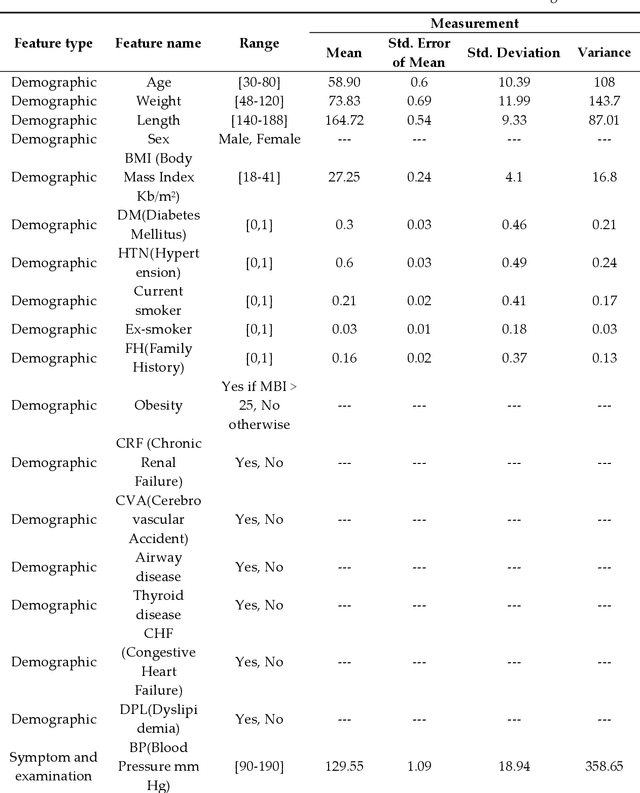
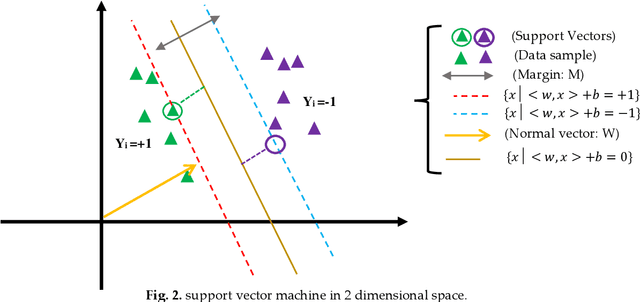

Abstract:Heart disease is one of the most common diseases in middle-aged citizens. Among the vast number of heart diseases, the coronary artery disease (CAD) is considered as a common cardiovascular disease with a high death rate. The most popular tool for diagnosing CAD is the use of medical imaging, e.g., angiography. However, angiography is known for being costly and also associated with a number of side effects. Hence, the purpose of this study is to increase the accuracy of coronary heart disease diagnosis through selecting significant predictive features in order of their ranking. In this study, we propose an integrated method using machine learning. The machine learning methods of random trees (RTs), decision tree of C5.0, support vector machine (SVM), decision tree of Chi-squared automatic interaction detection (CHAID) are used in this study. The proposed method shows promising results and the study confirms that RTs model outperforms other models.
Prediction of flow characteristics in the bubble column reactor by the artificial pheromone-based communication of biological ants
Jan 09, 2020



Abstract:In order to perceive the behavior presented by the multiphase chemical reactors, the ant colony optimization algorithm was combined with computational fluid dynamics (CFD) data. This intelligent algorithm creates a probabilistic technique for computing flow and it can predict various levels of three-dimensional bubble column reactor (BCR). This artificial ant algorithm is mimicking real ant behavior. This method can anticipate the flow characteristics in the reactor using almost 30 % of the whole data in the domain. Following discovering the suitable parameters, the method is used for predicting the points not being simulated with CFD, which represent mesh refinement of Ant colony method. In addition, it is possible to anticipate the bubble-column reactors in the absence of numerical results or training of exact values of evaluated data. The major benefits include reduced computational costs and time savings. The results show a great agreement between ant colony prediction and CFD outputs in different sections of the BCR. The combination of ant colony system and neural network framework can provide the smart structure to estimate biological and nature physics base phenomena. The ant colony optimization algorithm (ACO) framework based on ant behavior can solve all local mathematical answers throughout 3D bubble column reactor. The integration of all local answers can provide the overall solution in the reactor for different characteristics. This new overview of modelling can illustrate new sight into biological behavior in nature.
Modeling Climate Change Impact on Wind Power Resources Using Adaptive Neuro-Fuzzy Inference System
Jan 09, 2020



Abstract:Climate change impacts and adaptations are the subjects to ongoing issues that attract the attention of many researchers. Insight into the wind power potential in an area and its probable variation due to climate change impacts can provide useful information for energy policymakers and strategists for sustainable development and management of the energy. In this study, spatial variation of wind power density at the turbine hub-height and its variability under future climatic scenarios are taken under consideration. An ANFIS based post-processing technique was employed to match the power outputs of the regional climate model with those obtained from the reference data. The near-surface wind data obtained from a regional climate model are employed to investigate climate change impacts on the wind power resources in the Caspian Sea. Subsequent to converting near-surface wind speed to turbine hub-height speed and computation of wind power density, the results have been investigated to reveal mean annual power, seasonal, and monthly variability for a 20-year period in the present (1981-2000) and in the future (2081-2100). The findings of this study indicated that the middle and northern parts of the Caspian Sea are placed with the highest values of wind power. However, the results of the post-processing technique using adaptive neuro-fuzzy inference system (ANFIS) model showed that the real potential of the wind power in the area is lower than those of projected from the regional climate model.
Hybrid Machine Learning Model of Extreme Learning Machine Radial basis function for Breast Cancer Detection and Diagnosis; a Multilayer Fuzzy Expert System
Oct 29, 2019
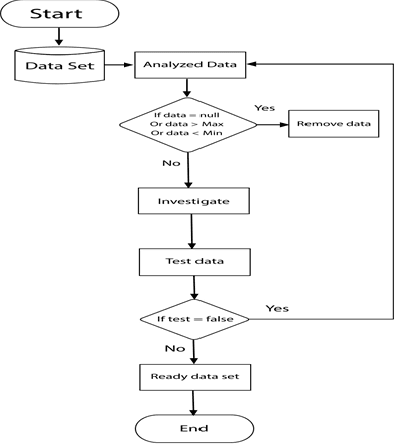
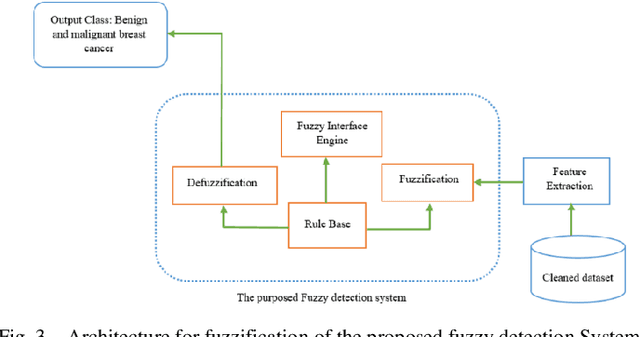
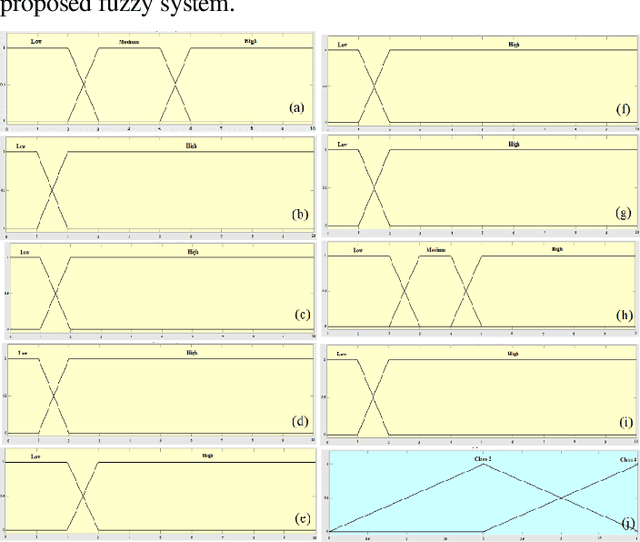
Abstract:Mammography is often used as the most common laboratory method for the detection of breast cancer, yet associated with the high cost and many side effects. Machine learning prediction as an alternative method has shown promising results. This paper presents a method based on a multilayer fuzzy expert system for the detection of breast cancer using an extreme learning machine (ELM) classification model integrated with radial basis function (RBF) kernel called ELM-RBF, considering the Wisconsin dataset. The performance of the proposed model is further compared with a linear-SVM model. The proposed model outperforms the linear-SVM model with RMSE, R2, MAPE equal to 0.1719, 0.9374 and 0.0539, respectively. Furthermore, both models are studied in terms of criteria of accuracy, precision, sensitivity, specificity, validation, true positive rate (TPR), and false-negative rate (FNR). The ELM-RBF model for these criteria presents better performance compared to the SVM model.
 Add to Chrome
Add to Chrome Add to Firefox
Add to Firefox Add to Edge
Add to Edge